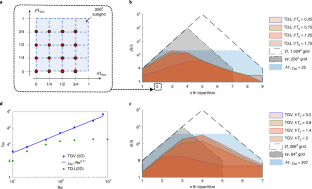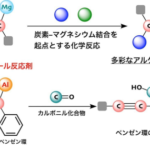この技術は、より高速で効率的な電子機器や部品の製造に利用できる。 Technology could be used to make faster, more efficient electronic devices and components
2023-01-03 ミネソタ大学
この発見により、研究者はこれらの特性を活用し、さらに他の新しいナノスケール材料と組み合わせることで、センサー、スマートテキスタイル、フレキシブルエレクトロニクスなどのより優れたデバイスを作ることができるようになる。
この論文は、米国科学振興協会(AAAS)が発行する査読付き科学雑誌『Science Advances』に掲載されています。
ミネソタ大学率いる研究チームは、特定の金属酸化物であるチタン酸ストロンチウムの膜をうまく作る新しい方法を発見し、これまでの自立型金属酸化物膜の合成を悩ませてきたいくつかの問題を回避することに成功した。
この方法では、酸化物薄膜材料が薄膜を形成し、基板からテープのように剥がすことで、自立した膜を作ることができる。しかし、この方法を金属酸化物に用いる場合の最大の障壁は、材料中の酸素が接触したグラフェンを酸化させ、試料をダメにしてしまうことである。
研究者らは、ミネソタ大学のJalan教授の研究室が開発したハイブリッド分子線エピタキシー法を用いて、すでに酸素と結合しているチタンを用いることで、この問題を回避することに成功した。さらに、この方法では、化学量論的な制御が可能であるため、組成を自動的にコントロールすることができるのだ。
<関連情報>
- https://cse.umn.edu/college/news/researchers-discover-new-process-create-freestanding-membranes-smart-materials
- https://www.science.org/doi/10.1126/sciadv.add5328
ハイブリッド分子線エピタキシーを用いたリモートエピタキシーによる自立型SrTiO3ナノメンブレンの作製 Freestanding epitaxial SrTiO3 nanomembranes via remote epitaxy using hybrid molecular beam epitaxy
Hyojin Yoon ,Tristan K. Truttmann ,Fengdeng Liu,Bethany E. Matthews ,Sooho Choo,Qun Su,Vivek Saraswat,Sebastian Manzo,Michael S. Arnold ,Mark E. Bowden ,Jason K. Kawasaki ,Steven J. Koester ,Steven R. Spurgeon ,Scott A. Chambers ,Bharat Jalan
Science Advances Published:23 Dec 2022
DOI: 10.1126/sciadv.add5328

Abstract
The epitaxial growth of functional oxides using a substrate with a graphene layer is a highly desirable method for improving structural quality and obtaining freestanding epitaxial nanomembranes for scientific study, applications, and economical reuse of substrates. However, the aggressive oxidizing conditions typically used in growing epitaxial oxides can damage graphene. Here, we demonstrate the successful use of hybrid molecular beam epitaxy for SrTiO3 growth that does not require an independent oxygen source, thus avoiding graphene damage. This approach produces epitaxial films with self-regulating cation stoichiometry. Furthermore, the film (46-nm-thick SrTiO3) can be exfoliated and transferred to foreign substrates. These results open the door to future studies of previously unattainable freestanding oxide nanomembranes grown in an adsorption-controlled manner by hybrid molecular beam epitaxy. This approach has potentially important implications for the commercial application of perovskite oxides in flexible electronics and as a dielectric in van der Waals thin-film electronics.



